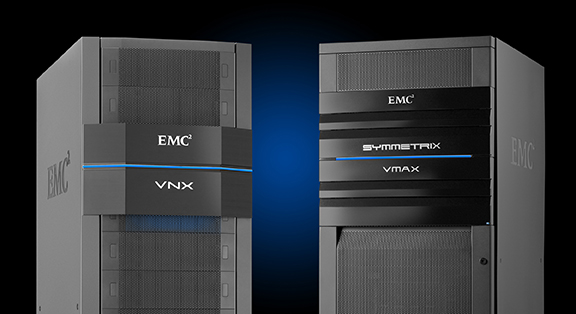 NEWS
NEWS
 NEWS
NEWS
 NEWS
NEWS
EMC’s new VMAX all flash array (AFA) solves performance problems for IO constrained VMAX users. This, according to Wikibon CTO David Floyer in his latest Professional Alert.
However, he writes, certain limitations of the VMAX AFA make it a tactical rather than a strategic solution today. The use of solid-state disk (SSD) without NVMe native support means that while the array is an order of magnitude faster than VMAX spinning disk arrays, it is still much slower than the PCIe/NVMe-based arrays, including EMC’s new DSSD AFA, announced the same day as the AFA VMAX.
Nonetheless, Floyer believes the VMAX roadmap and its V-Brick architecture, together with EMC’s Vblock and Vscale converged infrastructure solutions are important building blocks for creating what Wikibon calls “True Private Clouds.” These so-called true private cloud systems largely replicate public cloud attributes, on premises, within a customer’s data center. Taken in context, this capability has the potential for long-term strategic value delivery, according to Floyer.
In addition, Floyer specifically proposed an alternative for large Oracle VMAX hybrid environments that uses Oracle’s Automatic Storage management (ASM) software to offload read IOs onto a very low latency AFA. According to Floyer, “by inserting an AFA as an ASM mirror and performing preferred reads from the AFA, customers will see a significant throughput improvement at much lower costs.” The advantage of this approach for Oracle customers, according to Floyer, is this performance comes without having to change any VMAX processes.
Hewlett-Packard Enterprise Corp. has tested this approach using the 3PAR AFA, and IBM, Oracle and Violin Memory Inc., also have low-latency AFAs that in theory could provide such a capability. EMC’s new DSSD is another choice, and EMC has done extensive testing with Oracle on the DSSD product. For IO-constrained environments, this strategy can be cost-justified just by the reduced Oracle licensing costs alone, claims Floyer.
Floyer did not specifically call out EMC’s ExtemIO in the Oracle use case although it has a fit, especially in PowerPath installations within Oracle environments, says Floyer. According to Floyer, however “because you can’t turn off data de-duplication and compression within the XtremIO box, the read latency is less competitive than certain alternatives,” making EMC’s flagship flash product less attractive in this specific Oracle use case.
The full Strategic Alert, “The Strategic Implications of the EMC All-flash VMAX” is available on the Wikibon.com Web site.
THANK YOU